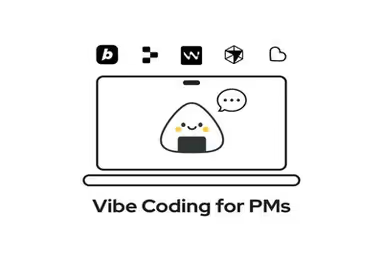.webp)
Product Roadmap Falling Behind? Here’s How to Fix It
Product roadmap falling behind? Learn why roadmaps slip, how to reset scope, manage stakeholders, and get delivery back on track without burning the team.

Product Roadmap Falling Behind?
It starts small. A feature ships a week late. A dependency takes longer than expected. Design is still waiting for clarity on edge cases. Legal hasn’t reviewed copy yet. And suddenly your quarter is off the rails, leadership is asking “Are we on track?”, and you’re rewriting timelines in Slack at 10pm.
If your product roadmap is falling behind, don’t panic and don’t just “push dates.” Slipping roadmaps aren’t a calendar problem, they’re a clarity and focus problem. The solution is not “work harder.” The solution is: tighten scope, refocus on outcomes, be transparent with stakeholders, and protect the team while you recover.
This article walks you through why roadmaps slip, how to triage, and how to reset without nuking credibility.
The Truth About Why Roadmaps Slip
Most roadmaps don’t fall behind because “engineering was slow.” That’s the lazy explanation. The deeper reasons are almost always:
- Too much in flight at once
- You’re trying to land five “Tier 1” initiatives with one team. That’s not strategy. That’s wishful thinking.
- Fuzzy problems
- You started building with unclear success metrics or edge cases. So work expands mid-flight.
- No guardrails on dependencies
- Legal, data, security, marketing, compliance, analytics—none of those were truly accounted for in the timeline.
- Stakeholder over-promising
- Sales/leadership made timeline promises to customers before the team validated feasibility. Now you’re in “just make it happen” mode.
- No single owner for the outcome
- Everyone is “contributing,” but no one is clearly driving the specific result you’re supposed to hit.
Here’s the uncomfortable part: if you don’t fix those root causes, moving dates won’t help. You’ll just miss the new dates, too.
If this sounds familiar, it’s worth revisiting how you prioritize work in the first place. This rundown of practical prioritization methods (RICE, MoSCoW, ICE) is a helpful reference when everything is “must have”:
Step 1: Stop the Bleed Before You Communicate Anything
Before you send an “update” upwards, you need clarity downwards.
Here’s what to do immediately:
Pause new intake
Freeze new “quick asks,” “while you’re in there,” and “small tweaks.” If you keep accepting scope creep while you’re behind, you’re not behind—you’re drowning.
Get one truth
Sit down with engineering, design, and whoever else is actually building. Ask three simple questions:
- What’s already done and in good shape?
- What’s in progress and blocked, and by what?
- What haven’t we even started?
This gives you an honest baseline. No fluff. No “it should be fine.” Just reality.
Identify the critical path
From that baseline, define the one path that gets some form of value into customers’ hands soonest. That is now the only thing that matters until you stabilize.
Notice what we did not do: we did not promise new dates to stakeholders yet. You can’t negotiate expectations until you understand the actual situation on the ground.
Step 2: Ruthlessly Re-Scope to the Outcome, Not the Original Idea
When a roadmap is late, most teams try to “finish the full feature anyway, just later.” That’s usually the worst move. You’re locking yourself into a bloated version of the thing, instead of asking: “What is the minimum slice that will move the outcome we care about?”
Here’s how to rescope intelligently:
Step 1: Restate the outcome
Example: “The goal is to reduce checkout drop-off by 10%, not ‘ship the new mega-checkout redesign’.”
Step 2: Strip the work down to the smallest slice that could move that outcome
Can you fix copy on the payment step first? Pre-fill data? Add trust messaging? Remove one step? Those are faster, cheaper, and lower risk.
Step 3: Put the rest in “later, if still needed”
Not “never,” just “not blocking this outcome.” You’ll be amazed how often the giant redesign becomes unnecessary once the first slice moves the metric.
Step 4: Add guardrails
Whatever you ship early can’t spike complaints, crash rates, churn, or ticket volume. You still have a brand to protect.
This is the exact mindset behind good SMART goals: commit to a measurable outcome in a fixed time window, with guardrails. If you need a refresher on writing SMART goals that don’t quietly wreck your team, take a look at this explainer.
Step 3: Align Stakeholders Without Losing Trust
Now that you’ve got reality (what’s true) and a focused slice (what’s next), you can talk to stakeholders.
Here’s how to do that without sounding like “we’re delayed, sorry lol”:
Lead with the outcome, not the delay
“Instead of shipping the entire new onboarding flow by end of month, we’re focusing on one high-impact slice that should lift activation by 4–6 points. You’ll see that in production next week, with metrics 48 hours later.”
That framing says: We’re not stalling. We’re being smarter.
Acknowledge risk directly
Say what’s blocked and what could slip further. When you name risk yourself, you control the narrative. When you hide it, someone else discovers it and escalates it for you.
Give stakeholders their job
Tell sales, CS, marketing, success, etc. exactly what you need:
- Sales: “Please don’t promise X timeline externally. Position it as ‘rolling improvements you’ll start seeing next week.’”
- Marketing/PMM: “Hold the campaign until we confirm activation uplift.”
- CS/Support: “Watch tickets related to step 2 of onboarding. Send us live examples daily.”
That last bit is important: you’re making your allies part of the recovery, not passive spectators.
Step 4: Protect Delivery Going Forward
It’s not enough to “catch up.” You have to stop this from happening again next quarter.
Here’s what to lock in:
One owner per outcome
Not “the team.” A human. “Sara owns activation. Leo owns billing reliability. Maya owns dashboard performance.” Shared accountability sounds nice but kills clarity.
Weekly readouts, not quarterly surprises
Create a short, repeating status ritual:
- What shipped this week
- The metric it was meant to move
- Did it move?
- What we’re doing next
This replaces “we’re still working on it” with evidence-based progress. It also means leaders don’t panic, because they’re never in the dark.
Hard WIP limits
Cap how many “top priorities” you run at once. If you’re working on six “critical” streams with one squad, that’s not hustle, that’s self-sabotage.
Decision log
Write down important calls: what you chose, why, and when you’ll revisit. This kills a ton of re-litigation and context thrash.
Warning Signs You’re About to Slip Again
If you’re seeing any of these, your roadmap is quietly drifting off track (again):
- Stakeholders are making promises to customers using language like “definitely by end of month,” and no one on the build side signed off.
- You can’t answer “what metric are we trying to move?” in one clean sentence.
- The thing you’re building has no guardrail metric (“don’t tank retention,” “don’t spike support load,” etc.).
- Engineers are asking for clarifications in Slack that should have been in the spec.
- Design is still iterating on V3 of something engineering is already building.
- You haven’t looked at actual adoption/activation data since kickoff. You’re building on vibes.
These are not annoyances. These are smoke alarms.
Conclusion
A product roadmap falling behind is not a failure. It’s a signal. It’s telling you that the scope is too big, priorities aren’t truly ranked, or you’re trying to build in the dark without a clear outcome. The fix is not “work nights and catch up.” The fix is to shrink the bet, protect the team, reset expectations around measurable impact, and build trust with stakeholders through transparency and steady signals.
Do that, and you don’t just “hit your roadmap.” You earn the right to set it.
FAQs
No. That usually makes leadership feel temporarily calmer but doesn’t fix the causes. First get clarity, then re-scope to the smallest slice that drives the core outcome. Then agree on updated delivery for that slice, not the whole original wishlist.
Lead with the outcome you’ll still deliver. “We’re moving from ‘full redesign in one drop’ to ‘targeted change that hits the metric in a week.’ Here’s how we’ll measure it, and here’s how you can support messaging externally.”
You have two honest paths. One: ship a controlled early version for that customer only, behind a flag, clearly labeled “iterating together.” Two: reframe the promise around outcome (“faster onboarding is rolling out next week”) instead of a feature name. Do not silently absorb a date someone else invented.
Limit concurrent work, assign a single owner per outcome, write SMART goals tied to measurable change, and run weekly readouts focused on results, not activity. Your job is not to make everyone happy short-term. Your job is to make the product and the business healthier long-term.
Read More Posts
.webp)
How to Evaluate Pricing Approach Success
.webp)
Product Manager vs. Product Owner vs. Project Manager

Customer Interview Techniques for Better Product Decisions

How to Add Value in 2 Weeks: From Our Experience as Interim Product Managers

Introduction to Vibe Coding for Product Managers: From Idea to MVP



